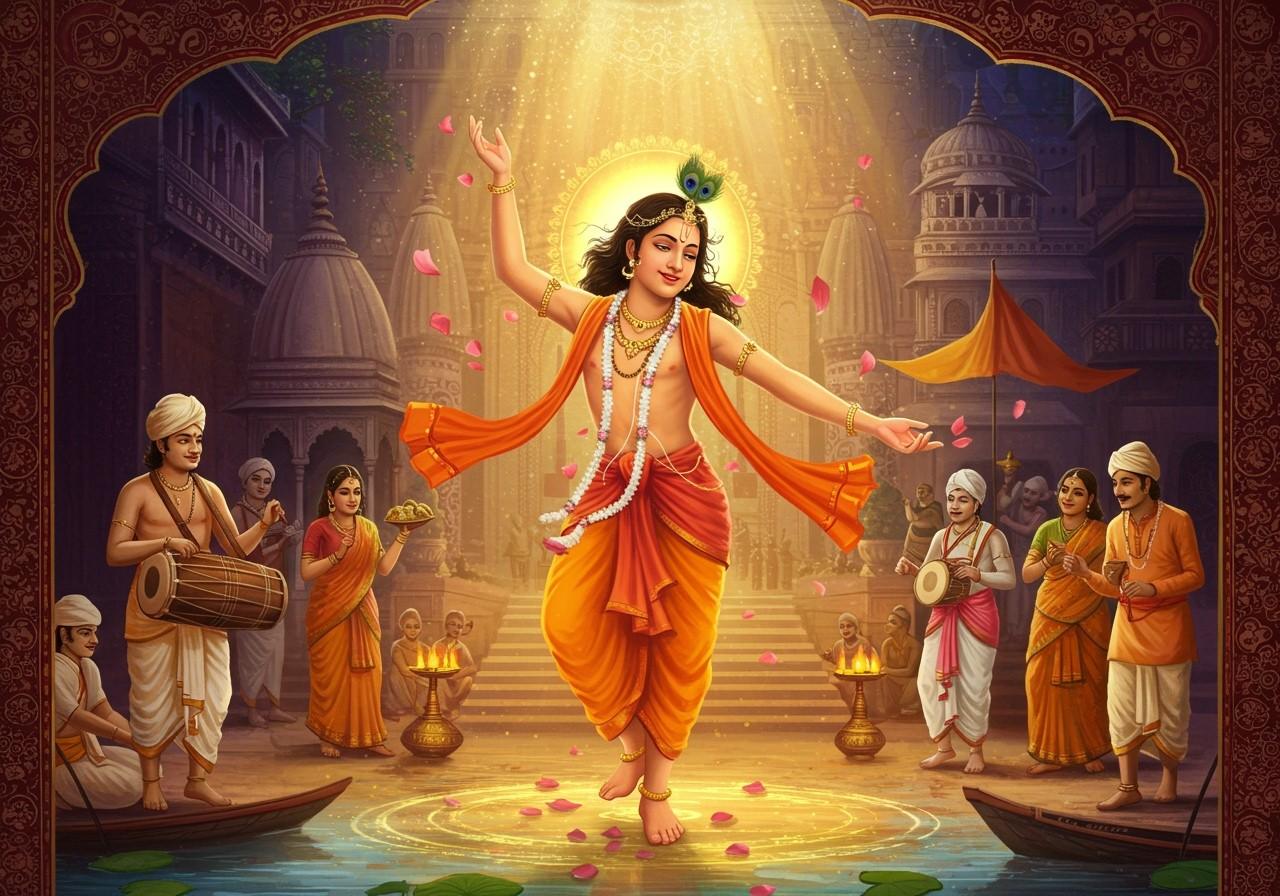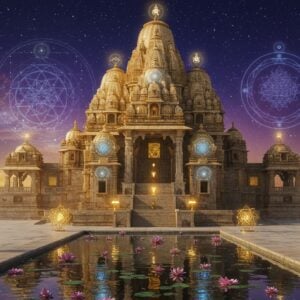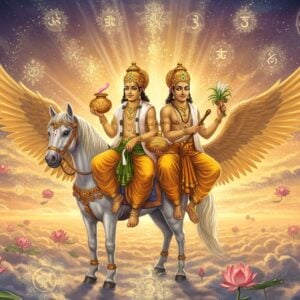
Chaitanya Mahaprabhu, a revered saint and mystic, significantly shaped India’s spiritual landscape in the 16th century. Known for his profound devotion to Lord Krishna, his life is a tapestry of divine experiences and influential encounters. His teachings, emphasizing love and devotion, continue to inspire millions across the globe.
The Divine Mission of Chaitanya Mahaprabhu
Chaitanya Mahaprabhu’s advent carries deep theological weight. Ancient scriptures like the Bhagavata Purana and the Vishnu Purana foretold his birth, highlighting his role in propagating the Sankirtana movement. This movement sought to rejuvenate the practice of collective chanting of the divine names, fostering spiritual awakening and unity. In an era marked by religious discord, his message of love and devotion offered a refreshing counterpoint to rigid dogma. His birth coincided with a period of spiritual seeking, and the Sankirtana movement provided a powerful means of uniting people through shared devotion. This practice transcended mere singing; it cultivated a sense of community and belonging. The enduring impact of this movement continues to resonate, promoting harmony and devotion across diverse communities.
Chaitanya Mahaprabhu’s teachings highlighted love and devotion as the cornerstones of spiritual practice. This emphasis created a path accessible to all, regardless of social standing or religious background. This inclusivity has ensured the enduring relevance of his teachings.
Key Events in the Life of Chaitanya Mahaprabhu
Born Vishvambhara Mishra in 1486 in Nabadwip, Bengal, he was affectionately called Nimai due to his birth under a Neem tree. His radiant, golden complexion earned him the name Gauranga. Born to devout Brahmin parents, Jagannatha Misra and Sachi Devi, from Sylhet, Chaitanya exhibited remarkable intellectual prowess from a young age. He excelled as a Sanskrit scholar, even besting Kesava Bhatta in a debate on prosody. However, his heart yearned for spiritual pursuits.
A pivotal moment in his life arrived in 1508 with his pilgrimage to Gaya. Here, he performed the śrāddha rituals and received initiation from Īśvara Purī, which further intensified his devotion to Krishna. At the age of 24, Chaitanya embraced the path of renunciation, becoming a sannyasi under Keśava Bhāratī and adopting the name Krishna Chaitanya. His subsequent travels throughout India, from South India to Vrindavan and Puri, were dedicated to disseminating the message of love and devotion for Krishna, inspiring countless individuals through Bhakti yoga.
Chaitanya Mahaprabhu and Vallabhacharya
Chaitanya’s encounter with Vallabhacharya in Varanasi holds special significance. Both were leading figures in the Bhakti movement, each making unique contributions. Despite their distinct theological viewpoints, they shared deep mutual respect. Their meeting underscored the unifying power of devotional love centered on Lord Krishna. Their interactions demonstrated how diverse paths can converge on the same divine truth. Their shared emphasis on love and devotion united their followers under a common spiritual objective.
Chaitanya Mahaprabhu and Lord Jagannath
Chaitanya Mahaprabhu developed a profound connection with Lord Jagannath of Puri. His ecstatic participation in the annual Ratha Yatra festival was legendary. His fervent dancing and singing, imbued with divine fervor, drew thousands into a shared experience of spiritual ecstasy. During his time in Puri, his teachings illuminated the universal nature of devotion. By connecting with devotees from all walks of life, he demonstrated that love for God transcends all boundaries.
Chaitanya Mahaprabhu and Krishna: A Mystical Union
Chaitanya Mahaprabhu embodied a unique spiritual identity, simultaneously a devotee and an incarnation of Krishna. He represented the combined form of Radha and Krishna, emphasizing the supremacy of Radha’s love. This mystical union became a cornerstone of his philosophy. His teachings on Achintya Bheda Abheda articulated the complex relationship between the individual soul and the divine—simultaneously one and different. This philosophy continues to inspire personal and collective spiritual practices amongst his followers.
Chaitanya Mahaprabhu’s Influence
Chaitanya Mahaprabhu’s impact transcended religious boundaries. His emphasis on devotion and equality aligned with the teachings of other spiritual leaders. His interactions fostered religious harmony in India, demonstrating the potential for peaceful coexistence among different traditions.
Poojn.in: Supporting Your Devotion to Chaitanya Mahaprabhu
Poojn.in provides a wide selection of items for devotees following the teachings of Chaitanya Mahaprabhu. Our collection includes pure cotton dhoti and kurta sets, tulsi malas and beads, brass and copper kartals, mridanga drums, ghee diyas and wicks, aarti thalis, Gaudiya Vaishnava texts, sandalwood tilak, and natural incense. Browse our collection of authentic puja items, sourced directly from traditional artisans, to support your spiritual practice. We offer secure online ordering and delivery across India.
The Enduring Legacy of Chaitanya Mahaprabhu
Chaitanya Mahaprabhu’s life and teachings remain a timeless source of inspiration, offering a path of love, devotion, and unity. His legacy continues to resonate with those seeking spiritual fulfillment, transcending boundaries of caste, creed, and tradition. By embracing his message, we can connect with the divine and foster unity and love in our own lives and communities.
FAQs on Chaitanya Mahaprabhu
How are Chaitanya Mahaprabhu and Vallabhacharya connected? Both were influential spiritual leaders in India during the same period. They shared mutual respect and a common focus on bhakti, although their theological approaches differed. Their connection exemplifies the diversity within the Bhakti movement.
What is the significance of Chaitanya Mahaprabhu and Jagannath? Chaitanya Mahaprabhu developed a deep connection with Lord Jagannath of Puri. His ecstatic participation in the Rath Yatra festival is legendary, highlighting his profound devotion. His time in Puri was a significant period in his life, where he taught and inspired many.
Why did Chaitanya Mahaprabhu appear? Chaitanya Mahaprabhu’s appearance was foretold in scriptures, emphasizing his mission to spread the Sankirtana movement and revive congregational chanting. He sought to promote spiritual awakening and unity through love and devotion to Krishna.
What is the relationship between Chaitanya Mahaprabhu and Krishna? Chaitanya Mahaprabhu is considered an incarnation of Krishna, specifically embodying the combined form of Radha and Krishna. He emphasized the importance of Radha’s love for Krishna as the highest form of devotion.
When is Chaitanya Mahaprabhu’s appearance celebrated? Chaitanya Mahaprabhu’s appearance is celebrated on Gaura Purnima, the full moon day in the month of Phalguna (February-March). This festival marks his birth anniversary and is a significant occasion for his followers.
At what age did Chaitanya Mahaprabhu take sannyasa? Chaitanya Mahaprabhu embraced sannyasa, the renounced order of life, at the young age of 24, dedicating himself fully to spiritual pursuits and the dissemination of his teachings.


